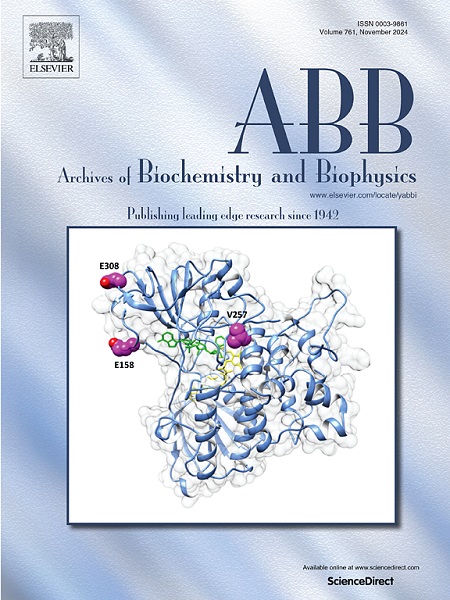Augmenter of liver regeneration inhibits renal fibrosis during acute kidney injury to chronic kidney disease transition by regulating autophagic flux
IF 3.8
3区 生物学
Q2 BIOCHEMISTRY & MOLECULAR BIOLOGY
引用次数: 0
Abstract
Background
Augmenter of liver regeneration (ALR) is believed to protect against acute kidney injury (AKI). The objective of this study was to investigate the mechanisms of ALR in the transition from AKI to chronic kidney disease (CKD).
Methods
ALR Conditional Knockout (CKO) mice were bilateral renal artery clamped to induce AKI and CKD. Serum creatinine, blood urea nitrogen, and uric acid were measured to reflect renal function. Renal histology was used to assess kidney damage. Transcriptome sequencing and Kyoto Encyclopedia of Genes and Genomes (KEGG) analysis were used to identify differentially expressed genes (DEGs) and related pathways. TUNEL assay was conducted to assess apoptosis. Polymerase chain reaction and immunohistology were used to analyze autophagy-related factors and kidney fibrosis. AAV9-mRFP-GFP-LC3 was injected to observe autophagy flux.
Results
In the murine models of AKI and CKD, loss of ALR led to markedly reduced renal function and renal tubular pathology injury. Multiple autophagy-related pathways were found to be enriched in up-regulated DEGs in transcriptome sequencing of ALR CKO and control groups with AKI. Renal fibrosis was evident in ALR CKO mice, with marked suppression of Beclin-1, a factor associated with the initiation phase of autophagy, and ATG5, an important factor in the extension phase of autophagosomes. The marked accumulation of LC3 and SQSTM1/P62, which is associated with the formation of autophagosomes, was also observed, suggesting an impairment of autophagic processes. Correspondingly, the AAV9-mRFP-GFP-LC3 results indicated that decreased ALR led to the accumulation of autophagosomes and impaired autophagic lysosome generation.
Conclusions
Collectively, these results suggested that ALR deficiency led to apoptosis and enhanced renal fibrosis by impairing autophagic flux, which in turn led to the transition of AKI to CKD.

肝再生增强剂通过调节自噬通量抑制急性肾损伤向慢性肾病转变过程中的肾纤维化。
背景:肝再生增强剂(ALR)被认为对急性肾损伤(AKI)有保护作用。本研究的目的是探讨ALR在AKI向慢性肾脏疾病(CKD)转变过程中的机制。方法:采用双侧肾动脉夹持ALR条件敲除(CKO)小鼠诱导AKI和CKD。测定血清肌酐、血尿素氮、尿酸反映肾功能。肾脏组织学用于评估肾脏损害。利用转录组测序和京都基因与基因组百科全书(KEGG)分析鉴定差异表达基因(DEGs)及其相关途径。TUNEL法检测细胞凋亡情况。采用聚合酶链反应和免疫组织学分析自噬相关因素与肾纤维化的关系。注射AAV9-mRFP-GFP-LC3观察自噬通量。结果:在AKI和CKD小鼠模型中,ALR缺失导致肾功能明显降低和肾小管病理损伤。在ALR CKO和AKI对照组的转录组测序中,发现多种自噬相关通路富集了上调的deg。ALR CKO小鼠肾纤维化明显,与自噬起始期相关的因子Beclin-1和自噬体延伸期的重要因子ATG5明显抑制。LC3和SQSTM1/P62的显著积累也被观察到,这与自噬体的形成有关,表明自噬过程受损。相应的,AAV9-mRFP-GFP-LC3结果表明,ALR的降低导致自噬体的积累和自噬溶酶体的产生受损。结论:综上所述,这些结果表明,ALR缺乏通过损害自噬通量导致细胞凋亡和肾纤维化增强,从而导致AKI向CKD过渡。
本文章由计算机程序翻译,如有差异,请以英文原文为准。
求助全文
约1分钟内获得全文
求助全文
来源期刊

Archives of biochemistry and biophysics
生物-生化与分子生物学
CiteScore
7.40
自引率
0.00%
发文量
245
审稿时长
26 days
期刊介绍:
Archives of Biochemistry and Biophysics publishes quality original articles and reviews in the developing areas of biochemistry and biophysics.
Research Areas Include:
• Enzyme and protein structure, function, regulation. Folding, turnover, and post-translational processing
• Biological oxidations, free radical reactions, redox signaling, oxygenases, P450 reactions
• Signal transduction, receptors, membrane transport, intracellular signals. Cellular and integrated metabolism.
 求助内容:
求助内容: 应助结果提醒方式:
应助结果提醒方式:


